St Juliot – 1890 to 1900
Travelling with St Juliot
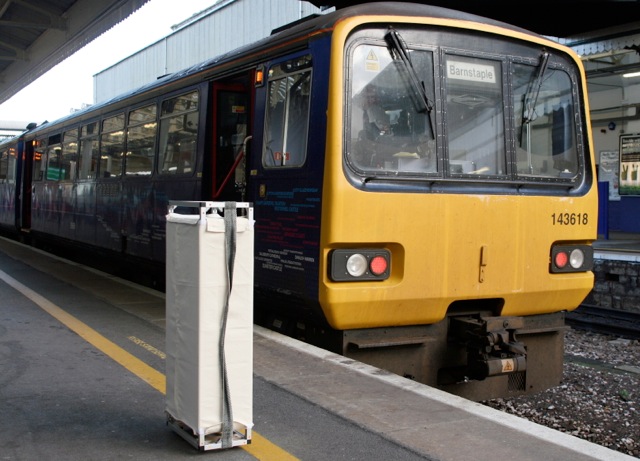
St Juliot is the result of several factors. These include:- the availability new 1/64th Scale track components, the wish to experiment with lightweight extruded polystyrene baseboards, the desire to attend exhibitions without travelling by car, and the need for a short-term project that could be completed while working on a larger layout.
The layout packs down to make a case that will fit on most overhead racks on a train. With another bag to carry the small collection of rolling stock required, it is a case of “have small layout – can travel by train”! Needless to say I have become rather knowledge about the best locations for reserving seats on the various trains that operate out of Exeter.
The picture above shows the layout in its carrying frame with fabric cover waiting to board the train to Barnstaple. No space problems here on a early Saturday morning service. The driver was much assumed, being a member of the Exe MRS.
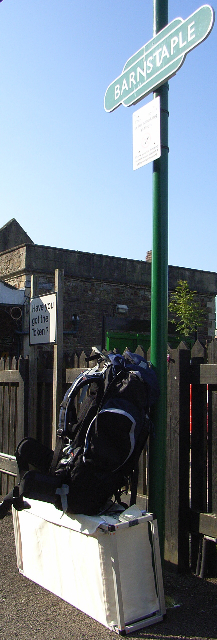
…. And here on the return journey with the backpack that is used to carry all the bits that are not in the layout crate.
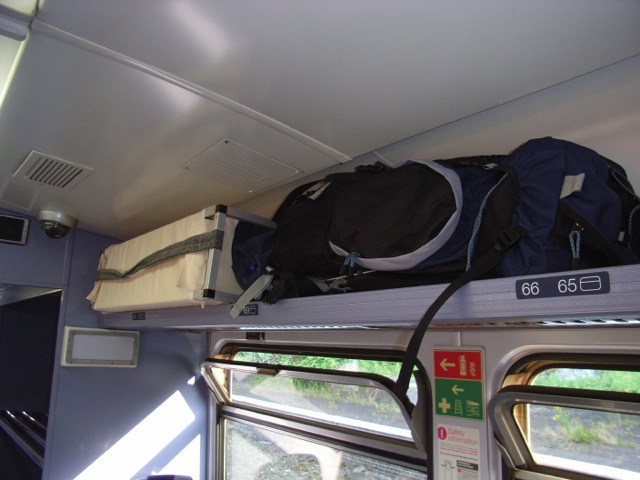
The return service was rather more crowded, but they was plenty of space on the long and deep side racks.
It is surprising just how much variation there is in the size, especially the depth of the overhead racks on British trains. The advent of air conditioning has often caused the lowering of ceilings and the fancy cross-sections of racks often make them less efficient in their task of carrying luggage. This flat self of BR origin is still one of the best… Good old BR!
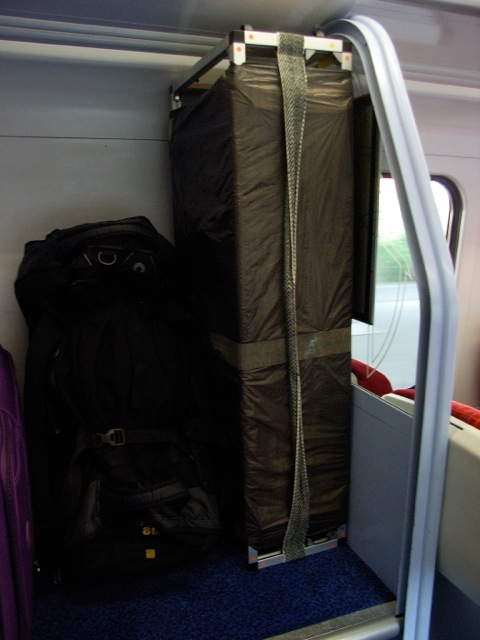
The Class 158s on the Waterloo route from Exeter have the advantage of the racks originally designed to have shatters, running in the slot to the right, for the secure carriage of mail bags. This makes a good space for the layout, on this journey to Uckfield. I had to move nine other pieces of luggage in preparation for getting off the train at Clapham Junction!
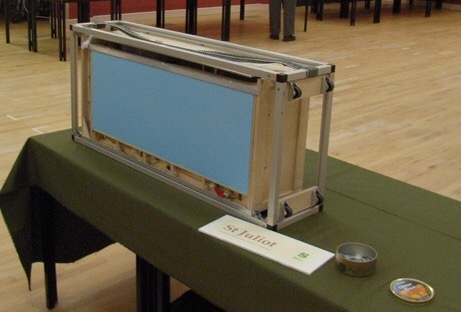
Here is the layout on the tables provided by the venue at Uckfield after the removal of much needed plastic bin-bag covers… It was forecast to be, and indeed was, a very wet weekend.
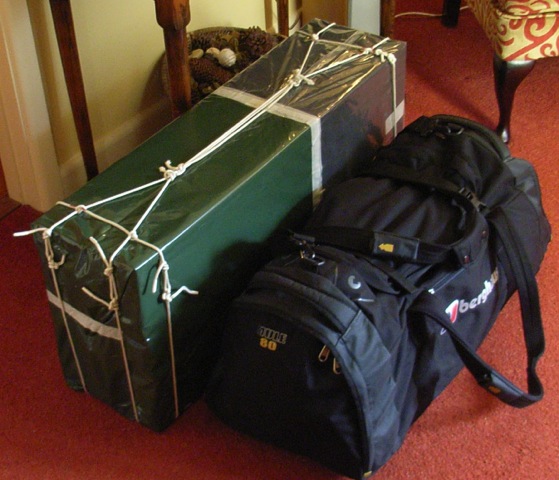
🇳🇱 🛄 A rather more robust cover was made for travelling to Utrecht. The heavy duty plastic sheet disabled the carrying strap so a net of thin rope was made to provide a handle. The sports bag, which can be warn as a backpack, even has arrows on the straps to help keep it the right way up… It is packed with the heavy stuff at one end.
This journey was badly disrupted by the loss of the railway to the west of Exeter at Dawlish, the emergency service to Paddington not being able to get me to St Pancras in time for my booked Eurostar. With some disruption on the Waterloo route it was decided to travel to stay with my daughter in south west London.
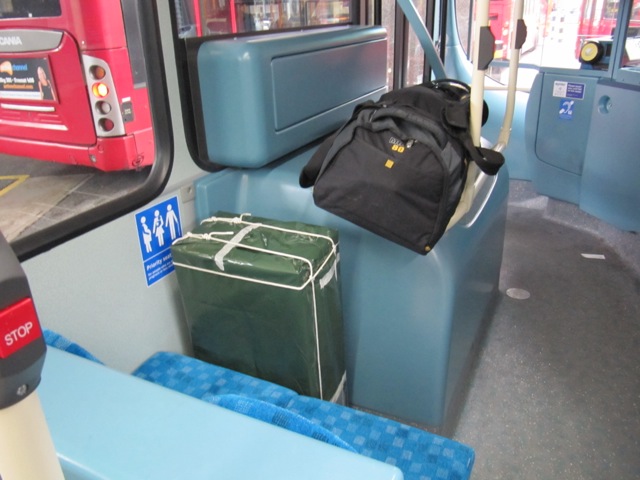
This meant a ride on a bus from Waterloo to St Pancras at the end of the morning peak. The forth bus had space for me, as it was travelling close behind the third which, like one and two had standing room only!
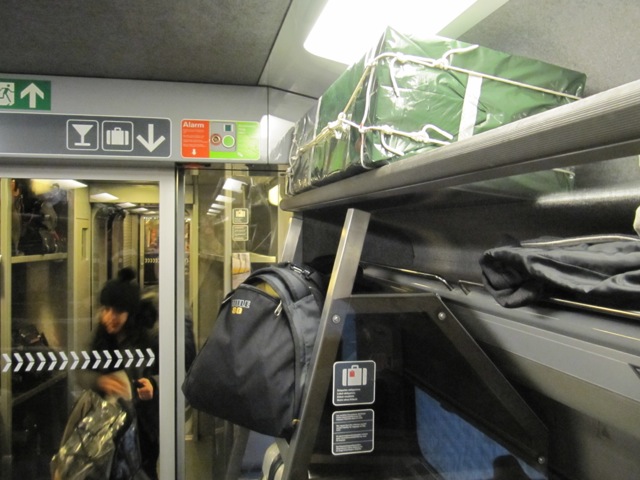
There was plenty of space on the end of coach racks on the Eurostar. Having been given a seat in the middle of the coach, I went to the customer service desk at St Pancras and relocated my seat to the end of the coach which allowed me to sit close to the layout. The only problem was that as the seat was also changed for my return journey, the amended ticket would not work in the gate line at Brussels Midi.
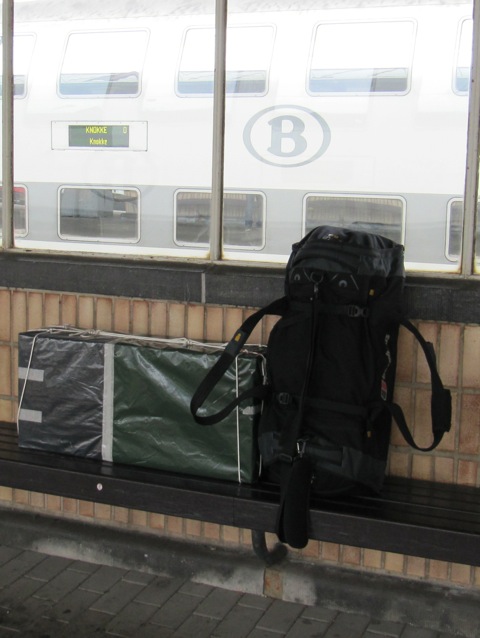
Changeing trains at Brussels Midi and the connection to Rotterdam.
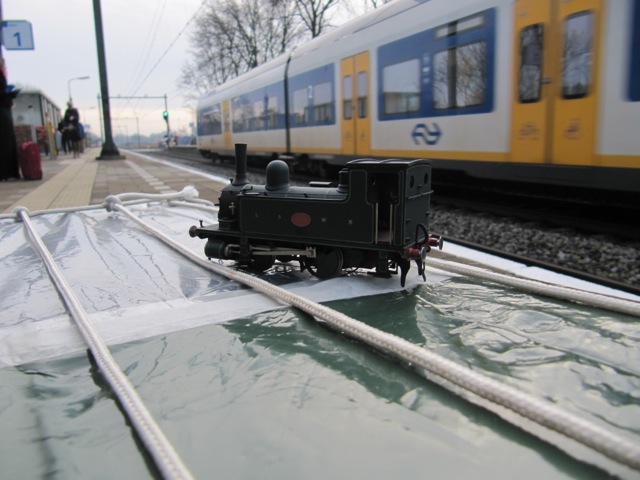
Bunnik station, near Utrecht, at the start of the return journey with the B4 sitting on the layout and modern, low floored Dutch commenter train in the background.
What is in the box? Building the layout.
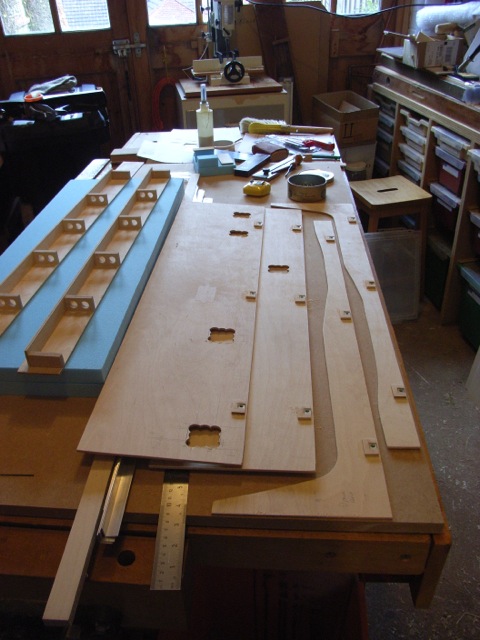
The baseboards are made from a mixture of extruded polystyrene and 4mm plywood.
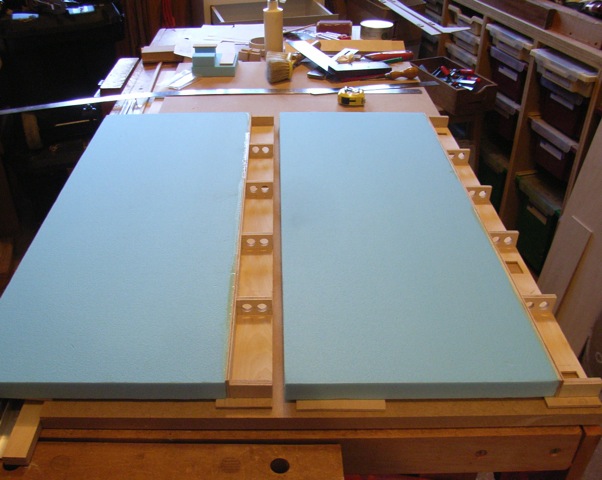
The extruded polystyrene forms the flat surface which is framed with ply, the back edge being made as an inverted channel that carries the wiring and provides space for the switches which also act as point levers.
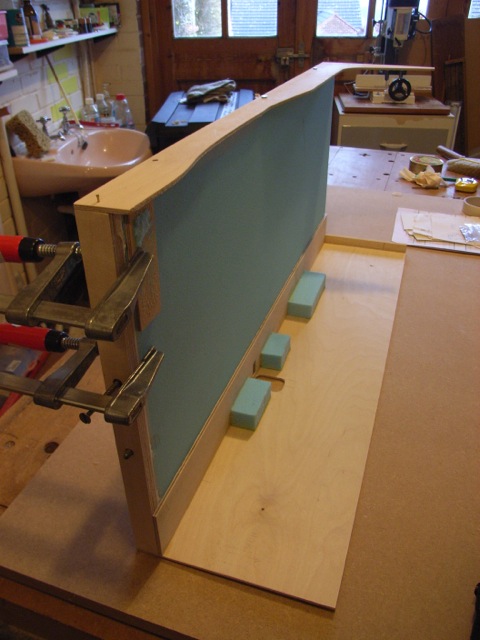
The front piece of plywood is profiled ready for the scenery and includes a full height ‘horn’ at the outer end which strengthens the end panel. Likewise the back, eventually to be painted as the sky, is part of the baseboard structure. Once the end is in place the boards form ‘hod’ shapes that fit over each other to make a box.
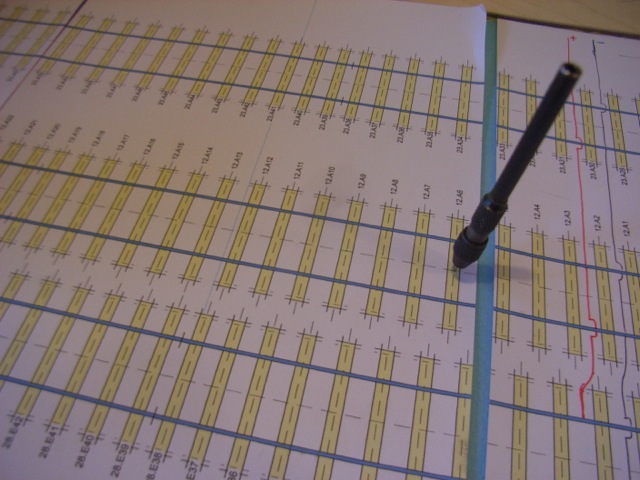
My modelling colleague Simon Dunkley kindly produced a Templot plan of the layout which was used prick through to the extruded polystyrene before glueing down the cork.
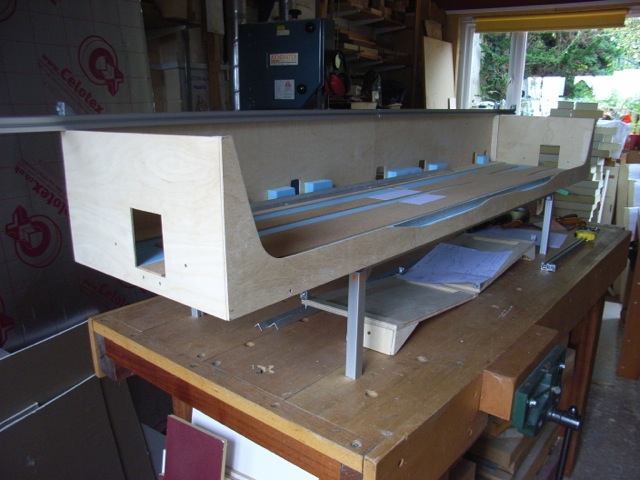
The initial setup without track. The pieces of wood under the layout are end boards from the original box design, before the aluminium Rexroth™ crate was made. These have been dispensed with in later designs by building more robust ends that do the job of the end boards. This saves both weight and space! It also allows quicker buildup and knockdown at exhibitions. Indeed it makes for a more elegant design all round
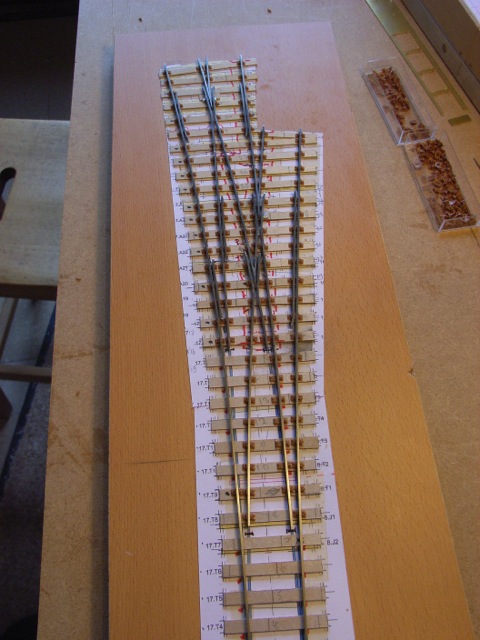
The three-way point being made off the baseboard…

… And added to the layout with all the other track…
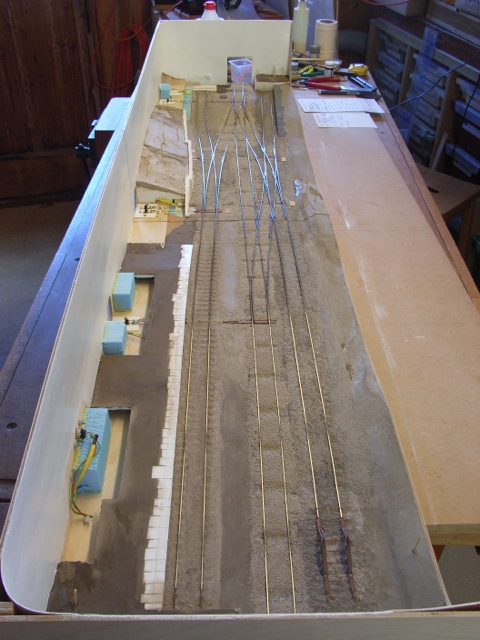
…and the ballast in place before the scenery was completed.
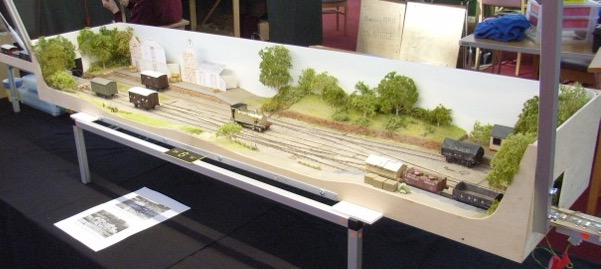
The layout on its early outing to Barnstaple, with mockup buildings finished with Derwent pencil colours and the B4 in nicklesilver.
Because of the need to keep the amount of material to be carried to a minimum, the layout has no built-in legs. Even when it stands on the carrying frame it is rather lower than many modern small layouts (about 900mm from the ground depending on the tables provided) and is best viewed from a seated position.
Four of the carrying frame components were originally used to make the lighting rig. This can be seen in the St Albans picture below. It used two floresent lighting strips of the under kitchen wall cabinet variety, that were rather bulky and heavy to carry. For the trip to Utrecht these were replaced by a much more compact set of warm white LED strips supported on an aluminium channel, suspended on brackets fixed to the back of the layout.
The finished layout…
The guidebook says, “St Juliot’s Church is in an isolated position on the northern slopes of the Valency Valley. The church is snugly tucked away below the road, and for those with the time to spare, the walk through the woods from Boscastle is perhaps the best way to find this magical spot.”
No doubt today this walk would be along the “Valency Trail” that has replaced the railway from Boscastle to Otterham. Like the Bodmin and Wadebridge, this railway was built as an isolated line linking the wooded valleys along the North Cornwall Coast with the sea. It brought in sea sand to improve the land and took out slate, china clay and granite (perhaps for bridges or stone setts in London). By 1890 the LSWR had taken over operation from the original builders.
Most of the traffic is freight, but there is some evidence of passenger workings. The line is worked as ‘one engine in steam’, with the points at St. Juliot worked from a ground frame, released via a key on the train staff. Possession of the staff confers permission to work the branch – there is only one staff, and no tickets, so woe-betide the engineman who drops it in the creek! The locomotives are the smaller classes available to the LSWR and reflect the limited traffic and space.
(One of the above three paragraphs is a fiction!)
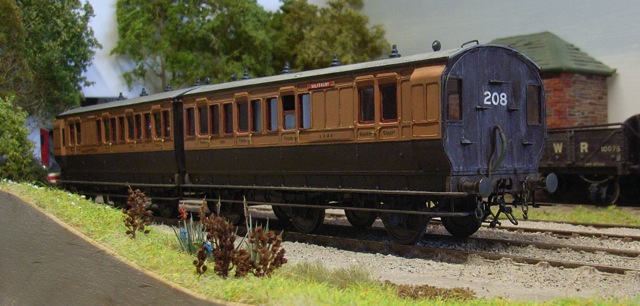
An early picture with a non-prototypical two coach (all third) set. There is a temporary building in the background made from a surplus to requirement 7mm scale model of the signal box at Padstow.
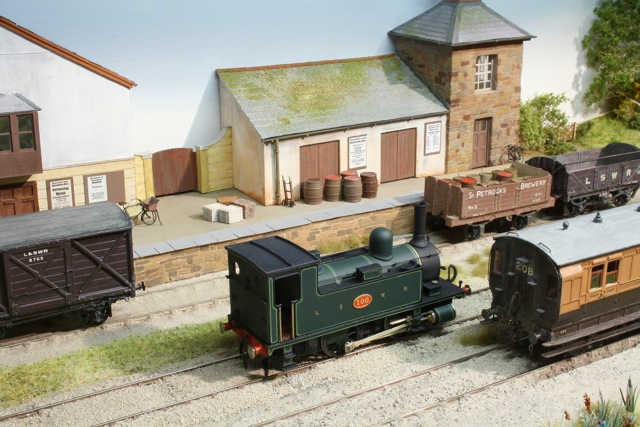
The LSWR B4 tank loco is a long way from its normal home in the docks at Southampton, although some did as far as Plymouth. The LSWR livery helps create a unity of colour with a pallet of browns and stone colours along with a variety of greens. The various elements of the layout are weathered with the same acrylic colours. I must have a go at the B4 one day. The buildings are loosely based on the original buildings of the Bodmin and Wadebridge.
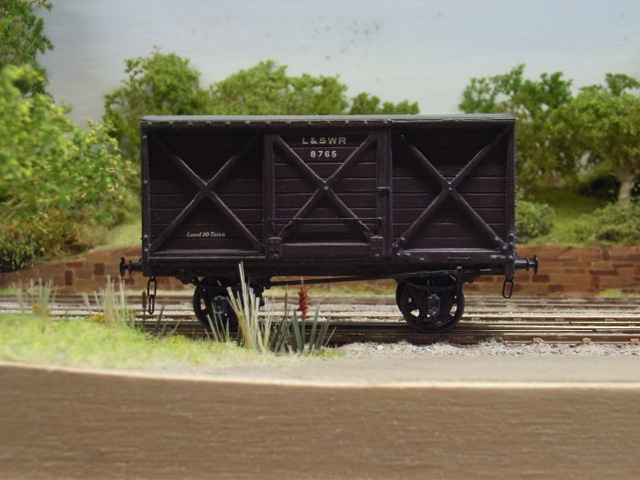
The shunter seems to have left one link on the hook for some reason… It is a good idea to look more closely at what is being snapped by the camera. Otherwise a rather nice picture.
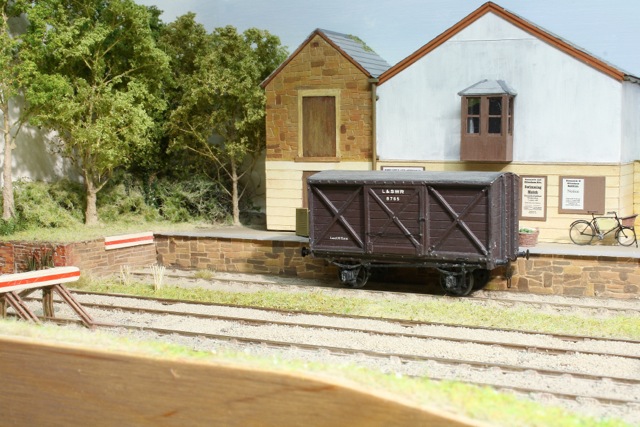
A lone van sits in the morning sun.
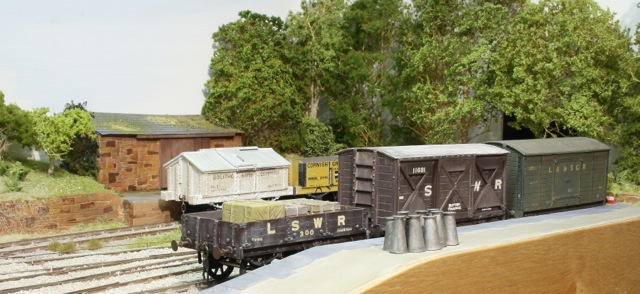
Both the mineral and general merchandise docks are full. I assume the ‘Butter Traffic’ van has be pressed into service to pick up the milk churns. The LB&SCR van is a long way from home.
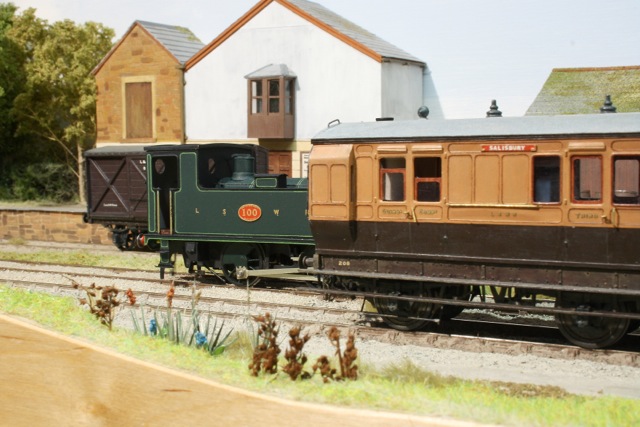
Not sure why the coach is displaying Salisbury. Rather more probable than the other side of the set that displays Bournemouth. The late Norman Pattenden originally built the four car set for use on a layout depicting the secondary line between the two places.
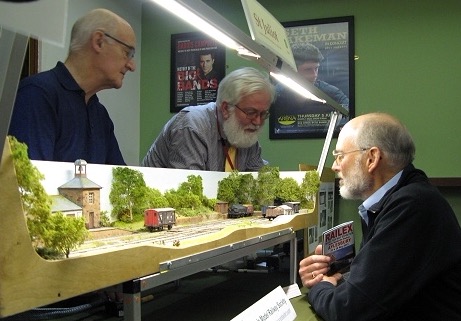
This is really a one-man layout, but it was a great pleasure to have Trevor Nunn enjoying himself at the controls at St Albans. It is good that the unknown spectator has taken the advice offered to sit down to view layout.
St Juliot was retired and passed to a 1/64th Scale modeller based in Cornwall, who hopes to set it up as a home layout. It has been partly replaced by the even smaller Tresparrett Wharf, but another Cornish layout is planned for the crate at sometime in the future.